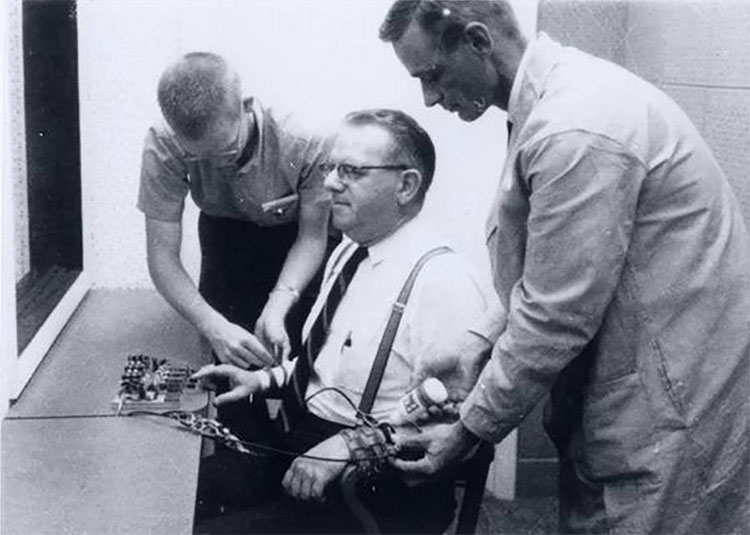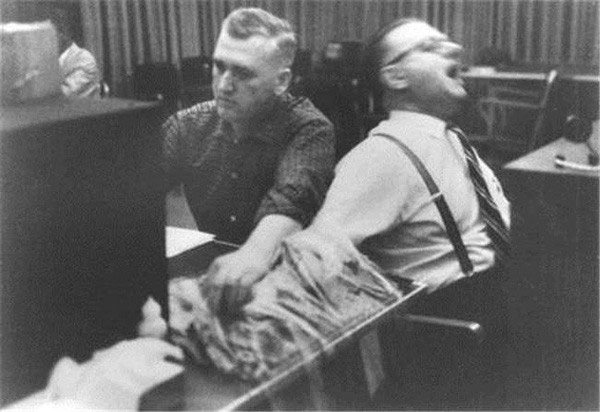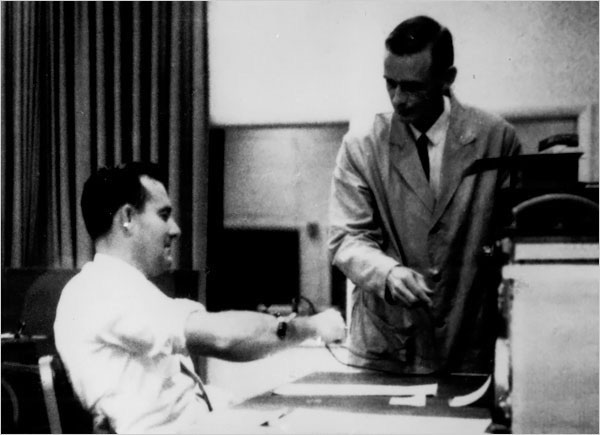The most 'inhumane' psychological experiment in history and the controversial facts behind
Human psychology is a hidden area of many mysteries, which people have spent a lot of time unable to grasp.
So in the past, scientists have done a lot of experiments to better understand human psychology. It is because it is a field that has not been thoroughly understood, some experiments have caused great controversy for the community, even considered "inhumane".
The most prominent of which must include the experiment performed by Milgram in 1961 - an experiment that is considered the "most inhuman " history of human psychology.
Horrifying experiment in 1961
In 1961, psychology professor from Yale Stanley Milgram published a forum to recruit people to participate in a psychological experiment. Each person will be paid $ 4.5 (about $ 37 at the moment, equivalent to nearly 400 thousand VND) for one hour of collaboration.
In total, Milgram recruited 40 participants, divided into "teachers" and "students" , then put into 2 different rooms. "Student" will be connected to an electric shock machine, but the control panel is placed in the "teacher" room .

Students are connected to an electric shock.
The control panel has a total of 30 push buttons, each of which will activate the current with an increase in intensity with a amplitude of 15V, and a maximum of 450V. Students and teachers cannot see each other. Next to "teacher" is a person in the role of supervisor.
Ask the following experiment: "Teacher" will ask "students" questions and with each wrong answer, the supervisor will order a button to punish.
Of course, electricity is just a fake, but the problem is that teachers don't know it. Whenever the button is pushed up, a tape of cries will be activated, just like a student is actually being electrocuted.

Simulate the Milgram experiment.
The results show that the truth is amazing: the volunteers in the role of "teacher" repeatedly push the "student" punishment button, although some people seem worried. But whenever people hesitate, they are ordered by the supervisor to enforce, forcing them to continue experimenting.
At the time when the current reached 300V, the "practitioners" were required to knock on the door, begging not to continue punishing them. But under the pressure of the supervisor, the results showed that up to 65% of participants brushed up the final button - which triggered the 450V current into their practitioner.
Since then, he has come to the following conclusions: under the pressure of power and when self-assuming that you are not responsible for what you do, people can cause cruel, hurtful actions. to others, no matter how insensitive, cruel and unethical it is.
Milgram's conclusion raises the fact that humans can obey blindly regardless of morality.
However, his experiment also caused a lot of controversy. First of all, inhumanity caused participants to suffer a severe shock, and two were the true nature of this experiment.

A practitioner cried when he performed the experiment.
Regarding the first factor, Milgram said that according to his survey, up to 84% of candidates said they were satisfied with their participation, while the remorse rate accounted for only 1% (the candidates expressed satisfaction). on a scale of 1 - 5).
This proves that no psychological impact is too serious here. However, it shows a more intimidating cause behind people's morality: when participants feel too much when hurting others, proving their nature is too bad.

A practitioner is conducting experiments.
However, more than 50 years later, another study led by Professor Alex Haslam of the University of Queensland (UK) in 2014 gave another explanation. They argue that these people feel comfortable not because of their moral too "decadent" , but because they do not feel they are wrong, and because they think that they are contributing to a great purpose. more labor.
Specifically, Professor Haslam hypothesized that participants thought they did nothing wrong. Instead, Milgram's persuasive ability made them feel like they had a great contribution to science, and so they were satisfied.
At this point, we have to ask the question: Is it right or wrong to hurt other people to serve the good purpose ? This question is still very controversial.
But for any purpose, being proud and happy when hurting others still reflects the fact that: "We humans all have darkness in our hearts".
- The most gruesome human experiments in history
- The most macabre experiments in the history of world science
- The most horrifying psychological experiment in history
- 'Little Albert' - One of the most terrible experiments in history
- Edison's controversial experiment shocked the world because of human cruelty
- The experiment proves that
- Investigate inhumane Medical experiments
- 10 interesting facts about world history
- Understand your mind through an interesting psychological test by an Austrian doctor
- Details of the three most dynamic stories of human history
- The world's largest experiment on Neutrinos
- 6 historical facts make you lose completely the concept of time
- History and big mistakes
- Interesting facts in world history talk about LGBT
 'Fine laughs' - Scary and painful torture in ancient times
'Fine laughs' - Scary and painful torture in ancient times The sequence of numbers 142857 of the Egyptian pyramids is known as the strangest number in the world - Why?
The sequence of numbers 142857 of the Egyptian pyramids is known as the strangest number in the world - Why? History of the iron
History of the iron What is alum?
What is alum? Humans have been able to communicate in dreams.
Humans have been able to communicate in dreams.  In 2026, astronauts will bring crops to the Moon
In 2026, astronauts will bring crops to the Moon  Cruel experiment: Killing 15 dogs to prove ghosts are real, the results obtained became a laughing stock for the scientific community
Cruel experiment: Killing 15 dogs to prove ghosts are real, the results obtained became a laughing stock for the scientific community  NASA's space chili sets two new records
NASA's space chili sets two new records  Searching for dark matter, scientists accidentally discovered something that could upset the underlying physics
Searching for dark matter, scientists accidentally discovered something that could upset the underlying physics  NASA wants to try to set a fire on the ISS space station: It sounds dangerous, but not for fun
NASA wants to try to set a fire on the ISS space station: It sounds dangerous, but not for fun 